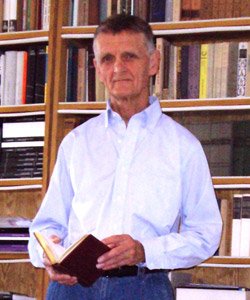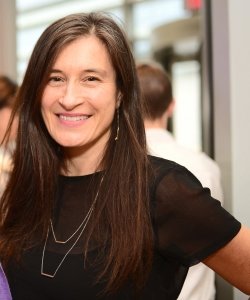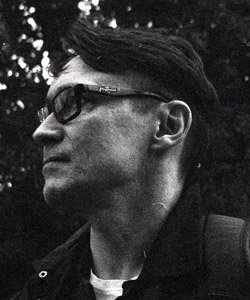26 October 2017 - Session 2
-

John Bowlt
Russian Art in America: The Case of Vyacheslav Zavalishin
One of the early advocates of the Russian avant-garde in the USA was the writer Vyacheslav Klavdievich Zavalishin (1915-1995). Poet, novelist, translator, and correspondent for the Russia daily, Novoe russkoe slovo, in New York, Zavalishin wrote with lucidity and authority on Russian writers such as Sergei Esenin and Nikolai Gumilev as well as artists – from Rublev, Bulatov, Khudiakov, and Re-Mi (Nikolai Remizov) to Anisfeld, Filonov, Malevich, and Suetin. He was also a principal and informed reviewer of the private exhibitions of modern Russian art which, during the 1970s and 1980s, did so much to publicize artists such as Goncharova, Larionov, Malevich, Popova, and Rodchenko in the USA -- such as "Russian Art of the Avant-Garde" (Leonard Hutton Galleries, 1971), "Russan Avant-Garde" (Dorothy Carus, 1975), and "Russian Revolution of Art" (Rosa Esman and Rachel Adler, 1979). The focus of my presentation is on Zavaishin's personal reminiscences and critical assessments, especially in the context of Filonov (as a teenager he had been among the very few to visit Filonov's "non-exhibition" at the State Russian Museum, Leningrad, in 1929) and Malevich (his book, Kazimir Malevich, was published in 1992). Tireless champion, generous and enthusiastic, Zavalishin was a vital source of information on modern Russian art, especially in the context of the emigration. He did much to foster America's rediscovery of the Russian avant-garde and, for this, merits both our remembrance and our gratitude. -

Christina Kiaer
Soviet Art’s American Adventure, 1934-1936
Despite its all-encompassing title, the “Art of Soviet Russia” exhibition that opened in Philadelphia in December 1934 failed to offer a representative sample of the range of Soviet art as it was then practiced. Organized on the Soviet side by VOKS, and on the U.S. side by the Pennsylvania Museum of Art in conjunction with the private American Russian Institute of Philadelphia, the exhibition was a disappointing compromise for both sides, including only 50 oil paintings–one third of the planned amount—and 190 works on paper. Archival records show that American organizers had begun with ambitious plans for a “comprehensive resume” of Soviet art over the previous fifteen years, including works by erstwhile avant-gardists like Malevich and Tatlin. But while the show would include former OST artists such as Deineka, Pimenov and Viliams, bona fide avant-gardists were not invited and most participating artists were inaccurately represented, because the show was assembled from what artists happened to have on hand to lend.
This paper examines the paradox that the very eclecticism of the exhibition, with its mix of works on properly Socialist Realist themes with more traditional and small-scale portraits, landscapes and modest domestic scenes, as well as its mix of realism with low-key modernism, contributed to the success of the exhibition with American critics and audiences. The organizers may have been downright embarrassed by it, but the American public liked it. Through an account of archival museum documents and of the many published reviews of the show as it traveled to seventeen more venues in the United States and Canada—including Kalamazoo, Michigan and Denton, Texas—before returning to the USSR in December 1936, I demonstrate that Americans’ enthusiasm for Soviet art stemmed from the notion of a special affinity between America and Russia. In particular, the anti-modernism of Soviet art of the 1930s was paralleled in American art, and endeared it to an American public that was largely suspicious of European modernism. The populist success of this exhibition in North America suggests that Soviet art in 1934, on the road to Socialist Realism, harbored the potential to become a significant form of modern art—rather than its disavowed opposite, as it has been understood since the advent of the Cold War.
-

Faina Balakhovskaia
Understanding in Order to Аsk
Difference in experience, thought processes, artistic theory and practice was once so great that it appeared almost nonexistent. Because of this difference, the participation of women artists in the Russian avant-garde movement was not considered something exceptional, deserving particular attention. There was no special women’s section among multiple groups and factions, unions and friendships that constituted the avant-garde. In order to see this phenomenon from another angle, it was necessary to witness a 1992 Guerilla Girls action in New York. This action was an impetus for the exhibition "Amazons of the Avant-Garde," which opened at the Guggenheim Museum in New York in September 2000. It is difficult to establish a logical connection between women in the Russian avant-garde and the Guerilla Girls. In Russia, women-innovators divided art into old and new, real and false, but for them having equality with men meant ignoring gender difference rather than accentuating it. For those who studied this subject in the years of the Soviet Union’s decline, an exhibition of women’s art, as well as any emphasis on the feminine nature of anything, was associated with the official Soviet system, which required a certain quota of women’s participation.
-

Ildar Galeev
Max Penson – Photographer of the Soviet Avant-Garde: Exhibitions and Publications in the West.
One of the most famous masters of the Soviet photographic avant-garde, Max Penson (1893-1959) worked all his life as a reporter for the Uzbek newspaper Pravda Vostoka, the principal Bolshevik publication in Soviet Asia in the 1920s and 1930s. Born in the town of Velizh (near Vitebsk, the city that harbored Marc Chagall, Kazimir Malevich, and the Suprematists), in 1915 he and his family left for Turkestan, fleeing the war and the Jewish pogroms. Having settled first in Kokanda and later in Tashkent, Penson took up the art of photography, and worked for newspapers as a documentary photographer from 1925. He became an official correspondent of the newspaper Pravda Vostoka in 1926. However, his photographs often appeared in Moscow newspapers and journals, such as Sovetskoe Foto, SSSR na stroike, Projektor, Krasnaia niva, and others. In the 1930s, he gained prizes at all-union competitions for best photographs, and in 1937 his photograph Uzbek Madonna won the Grand Prix at the Exposition Universelle in Paris. In 1949 he was fired from Pravda Vostoka as part of the “fight against cosmopolitans.” He died, in poverty and largely forgotten, in 1959.
His artistic legacy, labeled “boundless Penson’s archive” by Sergei Eisenstein, nearly perished under the ruins of a destructive earthquake in Tashkent in 1966. The archive was partly restored by the efforts of his children, and, beginning in the 1990s, it was shown at exhibitions first in Russia and then in Europe. The first exhibition abroad took place in 1996 in the Paris gallery Carré Noir, and was highly praised by the famous photographer Henri Cartier-Bresson. Later, Penson’s works traveled the entire world, visiting Italy, Austria, Switzerland, Sweden, France, Great Britain, Germany, and the USA. Penson’s name became inseparable from the history of pre-war European photography, with his photographic albums appearing in countries other than Russia. This paper will focus on the history of these exhibitions and publications of Penson’s photography.
